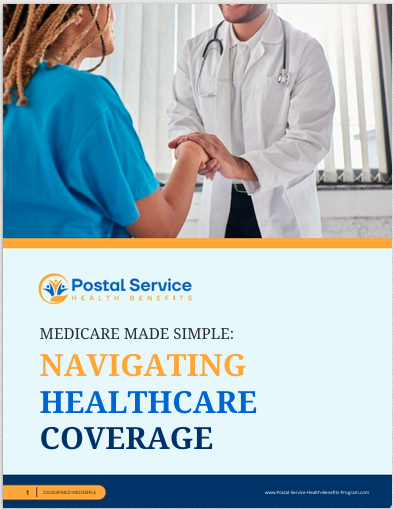Key Takeaways:
-
Reliable information about Postal Service Health Benefits (PSHB) plans is available from trusted, official sources to help you make confident decisions.
-
Understanding where to find accurate and timely details ensures you stay informed about your coverage options and any required actions.
Why Reliable Information Matters for PSHB Plans
As a postal worker or retiree, navigating your health coverage options can feel overwhelming, especially with the transition to the Postal Service Health Benefits (PSHB) Program. Ensuring you have access to accurate and up-to-date information is critical. Whether you’re looking for plan comparisons, enrollment deadlines, or coverage details, knowing where to turn can save you time and stress while helping you make informed decisions about your healthcare.
Your Go-To Source: The U.S. Office of Personnel Management (OPM)
The U.S. Office of Personnel Management (OPM) is the primary source of information for PSHB plans. OPM manages the PSHB program and provides detailed resources, such as:
-
Plan Brochures: These include comprehensive breakdowns of plan benefits, premiums, and cost-sharing details.
-
FAQs: The OPM’s website has answers to common questions about eligibility, Medicare integration, and more.
-
Annual Notices: Every year, OPM releases updates, including any changes to benefits, premiums, and enrollment processes.
To ensure you’re accessing the most accurate information, bookmark the official OPM website and check it regularly during Open Season (November 11 – December 13, 2025) and other key times.
PSHB Open Season: Timing Is Everything
Open Season is your annual opportunity to review and make changes to your PSHB coverage. During this period, you can:
-
Enroll in a plan if you’re not already covered.
-
Switch to a different PSHB plan that better suits your needs.
-
Update your coverage type (e.g., Self Only, Self Plus One, or Self and Family).
Missing Open Season means you’ll need to wait for the next one or experience a Qualifying Life Event (QLE) to make changes. Therefore, mark your calendar and use this time wisely to explore your options. OPM’s website will have all the necessary tools, including plan comparison charts, premium details, and enrollment forms.
Understanding Medicare Integration with PSHB
If you’re Medicare-eligible, your PSHB plan works alongside Medicare to offer comprehensive coverage. Here are some key points to consider:
-
Medicare Part B Enrollment: Enrollees who are Medicare-eligible must generally enroll in Part B to maintain PSHB coverage. Exceptions apply for those retired on or before January 1, 2025.
-
Cost Savings: Many PSHB plans offer reduced premiums, waived deductibles, or other incentives when you combine PSHB with Medicare.
-
Prescription Drug Coverage: Medicare-eligible PSHB members automatically receive prescription benefits through a Medicare Part D Employer Group Waiver Plan (EGWP).
Review your plan’s integration features on the OPM website or in your Annual Notice of Change (ANOC) to avoid missing out on potential savings.
The Role of Your Agency’s HR Department
Your agency’s Human Resources (HR) department is another valuable resource. They can provide personalized guidance on:
-
Eligibility criteria for PSHB plans.
-
How to navigate enrollment processes.
-
What documentation is needed for dependents or Medicare integration.
HR specialists can also clarify complex topics, like how changes in employment status might impact your coverage or what steps to take if you’re planning retirement.
Don’t Overlook Your Annual Notice of Change (ANOC)
Your Annual Notice of Change (ANOC) is one of the most critical documents you’ll receive each year. It outlines:
-
Updates to your current plan’s benefits and costs.
-
Any changes to premiums, deductibles, or copayments.
-
Coverage adjustments for the upcoming year.
Carefully review your ANOC when it arrives, typically in early November, to avoid surprises. This document will help you decide whether to keep your current plan or explore new options.
How to Compare PSHB Plans Effectively
Choosing the right PSHB plan requires comparing options based on your specific needs. When reviewing plans, consider the following:
-
Premiums: Ensure the monthly cost fits within your budget.
-
Deductibles and Copayments: Review the out-of-pocket costs for in-network and out-of-network services.
-
Network Coverage: Check if your preferred doctors and facilities are in-network.
-
Prescription Drug Benefits: Assess whether your medications are covered and at what cost.
-
Supplemental Benefits: Some plans offer additional services, such as dental, vision, or hearing coverage.
Use OPM’s plan comparison tools during Open Season to streamline this process.
Common Questions and Where to Find Answers
Navigating health benefits often comes with questions. Here’s where you can find reliable answers:
-
Eligibility Questions: Consult OPM’s website or your HR department.
-
Plan Details: Use the plan brochures available on OPM’s site.
-
Enrollment Issues: Contact your HR department or use OPM’s support channels.
-
Medicare Coordination: Review Medicare resources on how it integrates with PSHB.
Avoid relying on third-party websites or word-of-mouth for critical information, as these may not reflect the most current policies.
Staying Updated Throughout the Year
Health coverage needs and policies can change, making it essential to stay informed year-round. Here’s how:
-
Subscribe to Updates: Sign up for email notifications from OPM to receive important announcements.
-
Monitor Deadlines: Keep track of key dates, such as Open Season and Medicare enrollment periods.
-
Review Regularly: Set aside time every year to reassess your coverage and ensure it aligns with your needs.
-
Seek Clarification: Don’t hesitate to contact HR or OPM with any questions or concerns.
By staying proactive, you’ll avoid costly mistakes and ensure you’re always prepared.
A Quick Note on Qualifying Life Events (QLEs)
Outside Open Season, changes to your PSHB coverage are only allowed if you experience a Qualifying Life Event (QLE). Examples include:
-
Marriage or divorce.
-
Birth or adoption of a child.
-
Loss of other health insurance.
-
Retirement.
If a QLE occurs, you’ll have a limited window (usually 30-60 days) to adjust your coverage. Be sure to notify your HR department promptly to avoid missing the opportunity.
The Importance of Plan Brochures
Plan brochures are your detailed guide to each PSHB plan. They include vital information such as:
-
Benefits coverage.
-
Out-of-pocket costs.
-
Provider network details.
-
Exclusions and limitations.
Brochures are updated annually and are available on OPM’s website. Download and review them carefully before making any enrollment decisions.
Wrapping Up: Empower Yourself with Trusted Resources
When it comes to your Postal Service Health Benefits, accurate information is your best tool for making confident decisions. By relying on official sources like OPM and your HR department, you can navigate the PSHB program with ease and clarity. Take advantage of the tools and resources available to ensure your health coverage meets your needs today and in the future.






